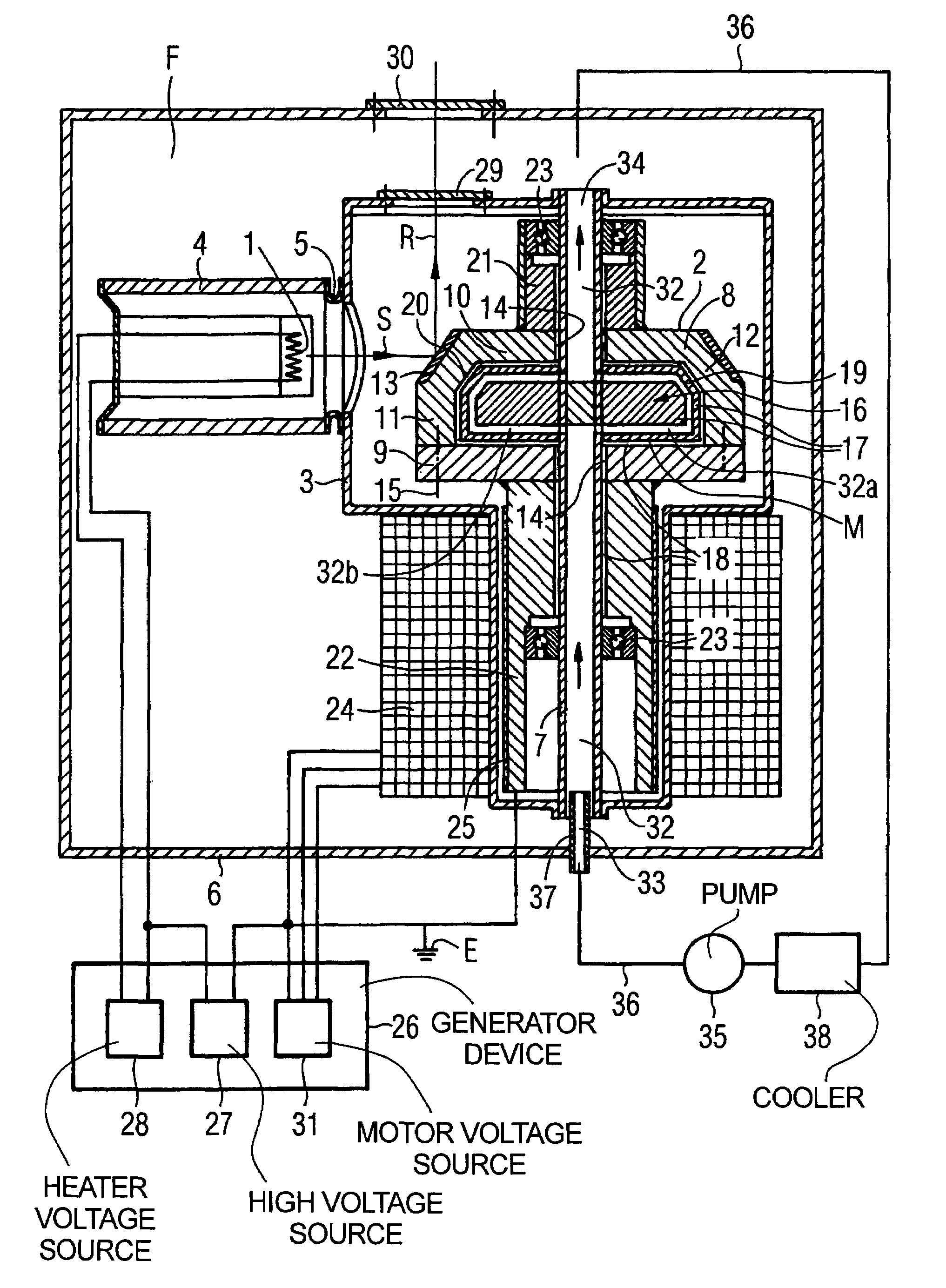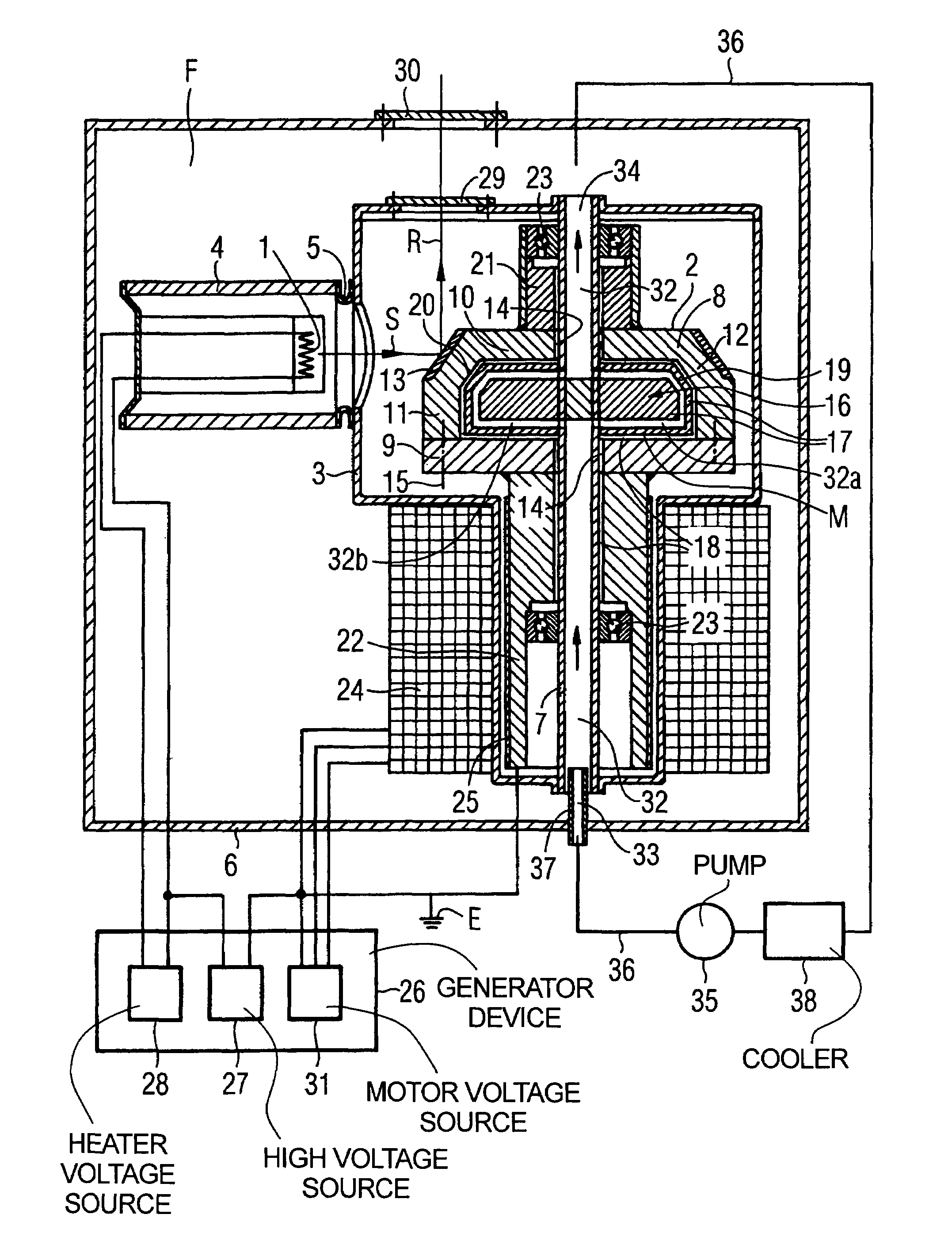X-ray tube with liquid-metal fluid bearing
a technology of liquid metal and bearing, applied in the field of x-ray tubes, can solve the problems of high angular acceleration and other problems, and achieve the effects of good cooling, efficient bearing of rotating anodes, and simple means
- Summary
- Abstract
- Description
- Claims
- Application Information
AI Technical Summary
Benefits of technology
Problems solved by technology
Method used
Image
Examples
Embodiment Construction
[0019]The x-ray tube shown in the FIGURE has a stationary cathode 1 and a rotating anode 2. The rotating anode 2 is disposed in a stationary vacuum housing 3. The cathode 1 is disposed in an isolator housing 4 that is vacuum-sealed to the vacuum housing 3 by means of a metal ring 5. The vacuum housing 3 is disposed in a protective housing 6 that is filled with an electrically insulating liquid F, for example insulating oil.
[0020]A housing-fixed axle 7 extends completely through the vacuum housing 3, on which the rotating anode 2 is mounted such that it can rotate. The axle 7 is vacuum-sealed at both ends by the wall of the vacuum housing 3.
[0021]The rotating anode 2 is rotationally symmetric with regard to the axle 7. It has a tank-like or shell-like first part that is subsequently designated as a tank 8. The tank 8 is terminated on an open side thereof by a flat, radially aligned second part that is subsequently designated as a cover 9. The tank 8 has a radially aligned base 10, a ...
PUM
 Login to View More
Login to View More Abstract
Description
Claims
Application Information
 Login to View More
Login to View More - R&D
- Intellectual Property
- Life Sciences
- Materials
- Tech Scout
- Unparalleled Data Quality
- Higher Quality Content
- 60% Fewer Hallucinations
Browse by: Latest US Patents, China's latest patents, Technical Efficacy Thesaurus, Application Domain, Technology Topic, Popular Technical Reports.
© 2025 PatSnap. All rights reserved.Legal|Privacy policy|Modern Slavery Act Transparency Statement|Sitemap|About US| Contact US: help@patsnap.com


